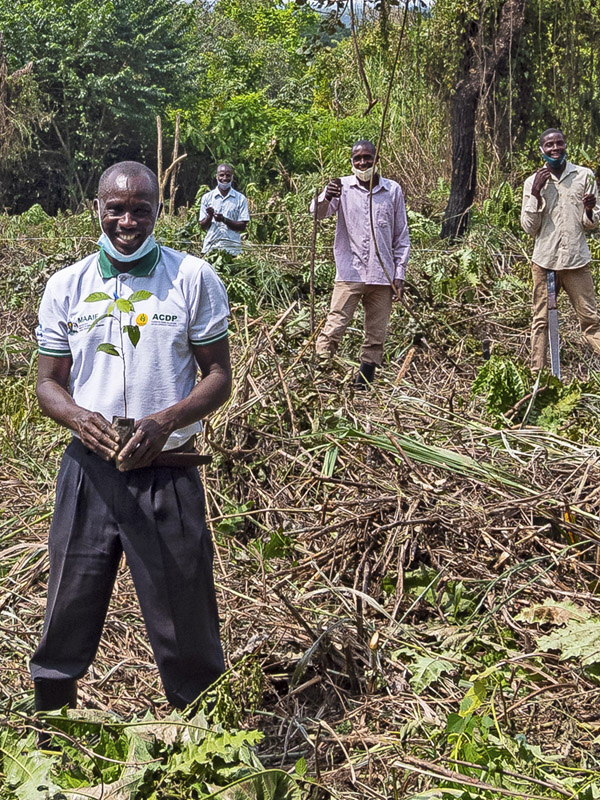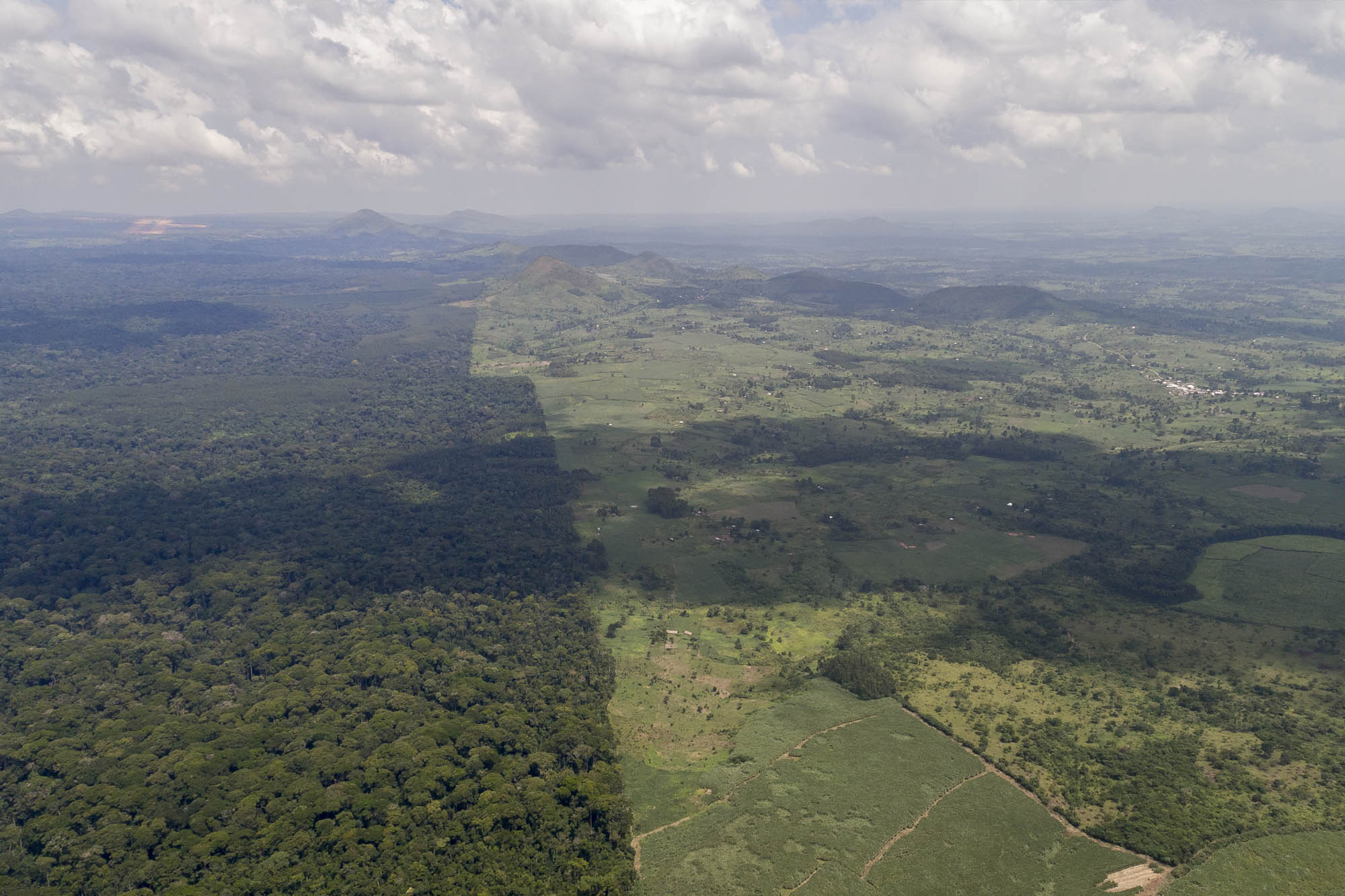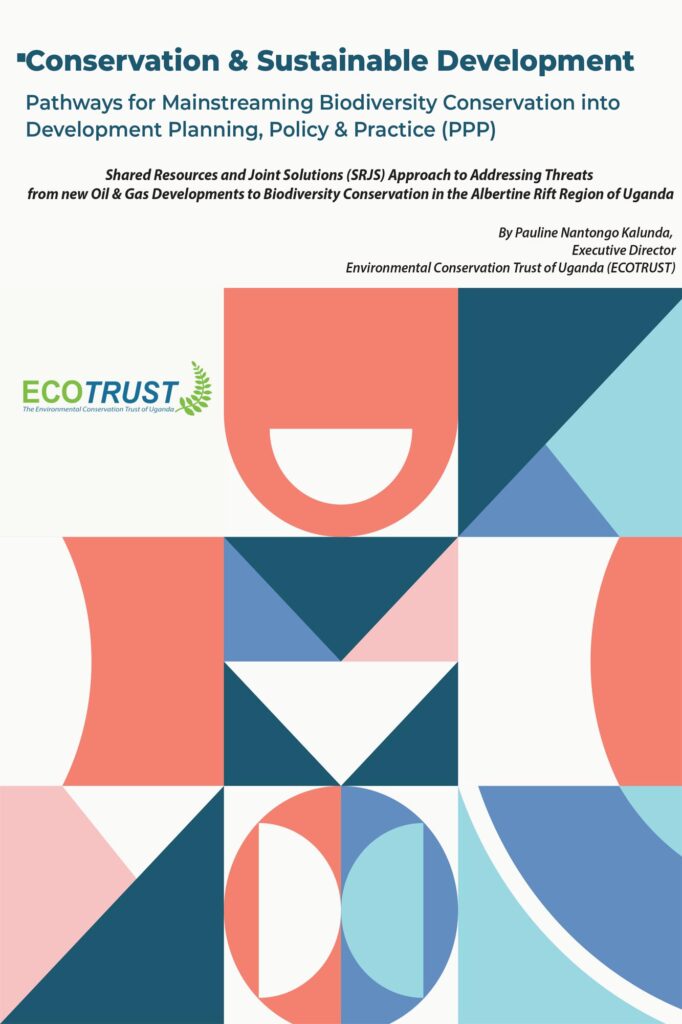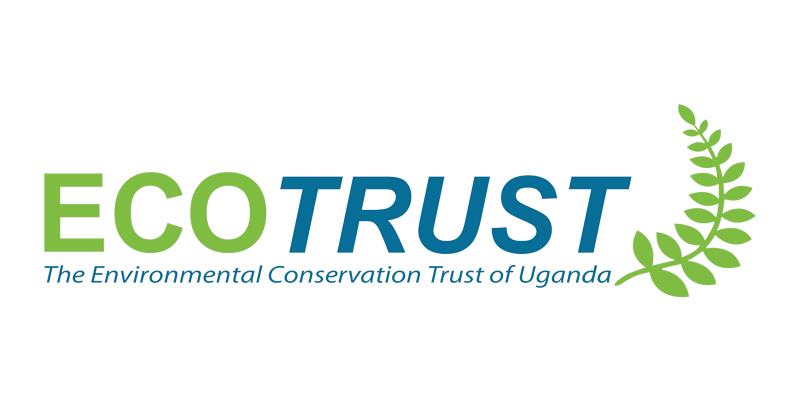Trees for Global Benefits
Shared Resources, Joint Solutions Uganda Programme
Ensuring Protection of International Public Goodss

The overall goal of the programme is to ensure that ‘environmentally sustainable development activities are achieved’
OUTCOMES
SUSTAINABLE AGRICULTURE
Sustainable agricultural and other good land uses adopted and practiced by the producers in and around Murchison landscape.
PROTECTED AREAS
Mandated institutions adequately manage protected areas.
OIL & GAS IMPACT
Oil and Gas impact on ecosystems minimized in the Murchison landscape
POLICY COMPLIANCE
National, social and environmental policies are complied with by all players in the oil and gas industry.
POLICY COMPLIANCE
All relevant International policies are complied with by all players in the oil and gas industry.
POLICY COMPLIANCE
Oil and gas companies’ own policies are complied with.
Shared Resources, Joint Solutions Uganda Pogramme
2016 - 2020
The Shared Resources, Joint Solutions Program is implemented in Uganda within two landscapes, i.e. The Murchison landscape that comprises seven districts within Western Uganda (Kibale, Hoima, Masindi, Kiryandongo, Nwoya, Buliisa and Nebbi Districts) and the Queen Elizabeth landscape in southwestern Uganda (Rubirizi, Kamwenge, Mitoma, Kasese, Kanungu, Rukungiri and Ibanda).
This five-year program, funded by the Netherlands ministry of foreign affairs and IUCN Netherlands, will work to reduce the impact of international drivers/threats of ecosystem change and degradation such as the emerging Oil and Gas sector, sugarcane and tobacco growing and other extractives mainly through lobby & advocacy and building the capacity of program stakeholders.
In the process, the SRJS will provide the Ugandan implementing partners (NAPE, AFIEGO, ECO-TRUST and IUCN-UCO) with capacity to build partnerships with central government (NEMA, NFA, and MWE e.t.c.), local government (in the landscape districts), and civil society to promote community rights and conservation of the landscape so as to protect International Public Goods (water provisioning, food security, climate resilience and biodiversity). The opportunity is that this program will support the improvement of the ecosystem that is currently under threat





LANDSCAPES

Murchison Landscape

Queen Elizabeth Landscape
The Murchison landscape and Queen Elizabeth landscape were identified as the area for the SRJS programme in Uganda. The Murchison-Semliki landscape extends from Murchison Falls National Park at the northern end of Lake Albert to the Toro-Semliki Wildlife Reserve at the southern end of the lake and encompasses all of the connected tropical forest on the escarpment above the lake. About 70% of the natural habitat in this landscape is protected. Key forest areas within the landscape include the Budongo and Bugoma Central Forest Reserves, together with smaller reserves such as Kagombe, Kitechura, Matiri, Itwara and Wambabya central forest reserves. This is home to species including elephants, chimpanzees and Nile crocodiles (Albertine Rift, 2020). The Queen Elizabeth landscape is located within the Albertine Rift Valley in Western Uganda. It covers approximately 1,978km2 of forest, swamp and wood land (Queen Elizabeth National Park, 2020). These landscapes were targeted because despite their biodiversity rich and forested nature, they are currently being depleted and are continuously under threat of degradation due to the expanding Oil and Gas activities, sugarcane and tobacco growing by out-growers and smallholder farmers. The programme sought to support the improvement of the ecosystems in these areas under threat.
STORY MAP
RESULTS
2017-2018
Policy Change
JUNE 2017 - Government of Uganda approved the National Content Policy for the Petroleum Sub-sector with environmental safeguards against oil threats
Policy Change
JAN 2018 - Hoima District local government council, convened a meeting and passed a resolution to develop an ordinance for food security and governance
Sustainable Agriculture
APRIL 2018 - Two tobacco companies resolved to stop buying tobacco grown in Ongo Community forest in Masindi and offered free tree seedlings to restore the degraded forest areas
Policy Change
DECEMBER 2018 - Views of the indigenous and vulnerable groups, particularly with respect to the adaptation of goals incorporated into the draft climate change bill
Environmental Protection
DECEMBER 2018 - TOTAL E&P UGANDA’s attention was brought to the need to protect sacred natural sites in line with the Resettlement Action Plan for the Central Processing facility
Policy Change
SEPT 2018 - One bad law blocked to protect nature and people. This is the proposed amendments to Article 26 of the 1995 Uganda Constitution
Community Forests
APRIL 2018 - Responsibility of managing 10 forests was devolved to the community by Masindi District Local Government as community forests.
Protection of Rights
MAY 2018 - In Buliisa district 7,000 households pressured Total E&P and Ministry of Energy to disclose the Resettlement Action Plan for the Tilenga oil project
National Environment Act
MARCH 2018 - Uganda enacted the National Environment Act 2019 with provisions on SEA and ESIA and others to protect the environment from oil threats into law
Oil & Gas Stakeholders
NOVEMBER 2018 - NEMA and Petroleum Authority of Uganda were pressured to organise public hearings for the Tilenga Oil Projects’ Environmental and Social Impact Assessment report
2018- 2020
Waste Managment
APRIL 2019 - Kinyara Sugar Company Ltd provided financial support under Corporate Social Responsibility for waste management in Kabango Town to protect wetlands
Communal Land Associations
SEPT 2019 - Nine (9) Community Land Association certificates secured for Communities in the Bugoma – Budongo CFR wildlife Corridor to manage community forests
Bugoma Forest Protection
MARCH 2020 - Bunyoro Kitara Cultural Kingdom opens up for a counter-offer of PES-based conservation agreement instead of converting Bugoma Forest for sugar cane growing
Bugoma Forest Protection
MAY 2019- Hoima Sugar Ltd halted conversion of Bugoma Central Forest Reserve to sugar growing despite court ruling in their favour
Policy Change
AUGUST 2019 - Ministry of Water and Environment consented to the mainstreaming of the protection of Sacred Natural sites into the National Wetlands Resources Management bill
Wildlife Act
JULY 2019 - Provisions for creation of community wildlife committees; sanctions for wildlife crime for endangered species; benefit sharing; incorporated in the Uganda Wildlife Act.
Kiiha Watershed Protection
DECEMBER 2019 - Kinyara Sugar Company Ltd contributed financial support for the development of Kiiha Catchment Management Plan.
PUBLICATIONS

This paper presents a Shared Resources-Joint Solutions Model for Conservation and Sustainable Development – linking development Planning, Policy and Practice.
It proposes that all development planning must be guided by the concept of shared resources – humans being just stewards. In seeking to share resources between nature and development – we must establish the Total Economic value of our ecosystem goods and services and ensure that development program designs are based on the sustainable management of the ecosystems that support life.
Understanding total economic value will enable policy makers to design policy guidelines and laws that ensure responsible investments. Currently there remains a tendency to treat the environment as an institutional and economic externality. Integrating biodiversity conservation and development concerns will enable improvements in productivity, resilience and adaptability of livelihoods and economies. Although this simple fact is now well accepted, achieving sustainable development remains elusive in Practice. Influence, power, money suppress transparency and accountability leading to intentional lack of compliance to set targets and standards; and poor enforcement of set policies and regulations.
The model proposes designing joint solutions in the realm of practice that link planning, policy, and practice to a set of conservation outcomes and milestones segregated to different implementing partners. The paper points out that influencing policy and practice is about influencing people – establishing biodiversity champions at every operational level.


Follow Us On